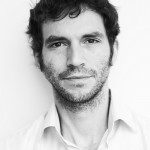Link to Pubmed [PMID] – 18818741
PLoS Genet. 2008;4(9):e1000188
Chromosome movements are a general feature of mid-prophase of meiosis. In budding yeast, meiotic chromosomes exhibit dynamic movements, led by nuclear envelope (NE)-associated telomeres, throughout the zygotene and pachytene stages. Zygotene motion underlies the global tendency for colocalization of NE-associated chromosome ends in a “bouquet.” In this study, we identify Csm4 as a new molecular participant in these processes and show that, unlike the two previously identified components, Ndj1 and Mps3, Csm4 is not required for meiosis-specific telomere/NE association. Instead, it acts to couple telomere/NE ensembles to a force generation mechanism. Mutants lacking Csm4 and/or Ndj1 display the following closely related phenotypes: (i) elevated crossover (CO) frequencies and decreased CO interference without abrogation of normal pathways; (ii) delayed progression of recombination, and recombination-coupled chromosome morphogenesis, with resulting delays in the MI division; and (iii) nondisjunction of homologs at the MI division for some reason other than absence of (the obligatory) CO(s). The recombination effects are discussed in the context of a model where the underlying defect is chromosome movement, the absence of which results in persistence of inappropriate chromosome relationships that, in turn, results in the observed mutant phenotypes.

